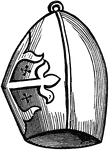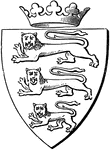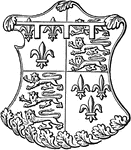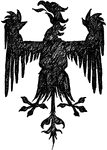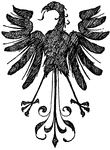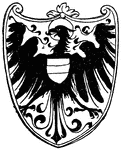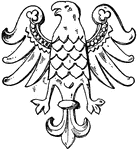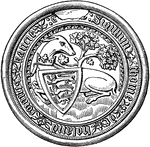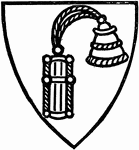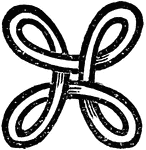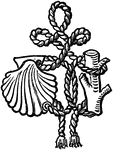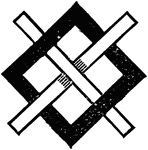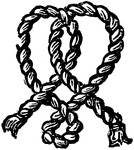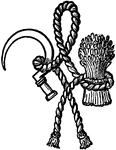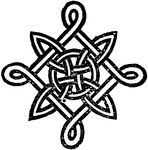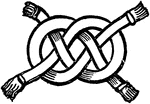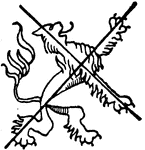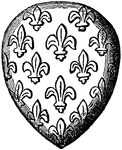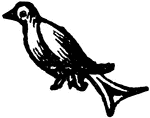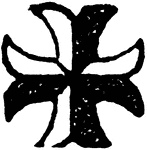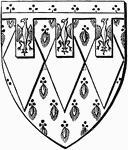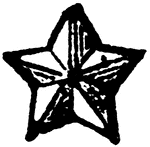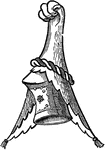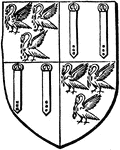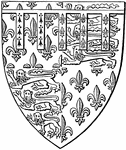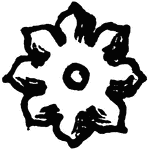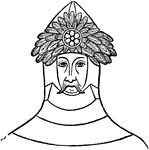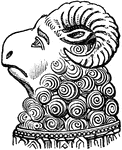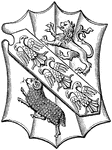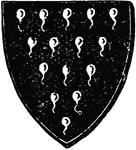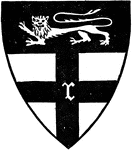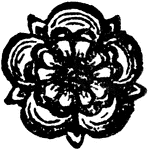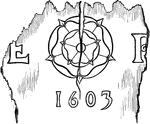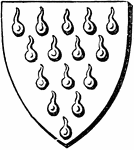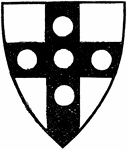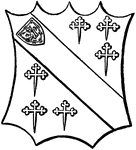
Augmented Shield of Howard
The heraldic shield of the British Howard family, after its augmentation.
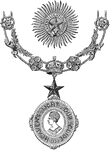
Insignia of the Order of the Star of India
"This Order was instituted by Her Majesty the Queen, in the year 1861, for bestowing honor upon the…
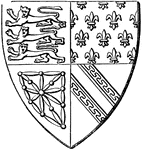
Shield of Queen Isabella
"Quartered shield of arms borne by Isabella, Queen of Edward II."—Aveling, 1891

Effigy of Henry, First Duke of Lancaster
An effigy of the first Duke of Lancaster in his coat of arms.
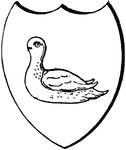
Martlet
A martlet is a heraldic charge depicting a mythical bird, similar in appearance to the swallow, but…
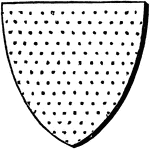
Or Shield
A heraldic shield made of or (gold), which is represented by engraving dots of pricks into the shield.
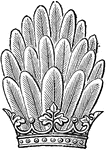
Panache
"A plume of feathers, generally those of the peacock, set upright, so as to form a crest. The Panache…
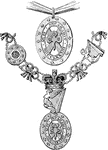
Insignia of the Order of St. Patrick
"The ribbon, of sky-blue, four inches in width, is worn over the right shoulder, and sustains the badge…
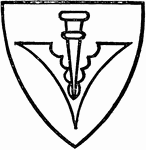
Pheon
"The barbed head of a spear or arrow, engrailed on the inner side. The point of the spear is placed…
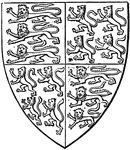
Shield of Queen Philippa
The heraldic shield of Philippa of Hainault, the Queen consort of Edward III of England.
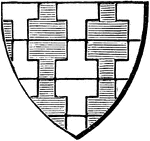
Potent Counter-Potent Shield
"Potent counter-potent, sometimes called varry cuppy, differs from potent in that the potents of the…
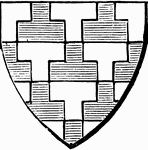
Potent Shield
"Potent is when the field is covered with figures of potents, or crutches. Potent is now an obsolete…
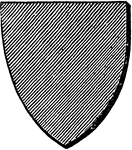
Purpure Shield
A heraldic shield with a pursuer (purple) surface, shown by the diagonal lines stretching from the top-right…

Rose-en-Soleil
"The rose argent of the House of York, surrounded with rays, as of the sun."—Aveling, 1891

Shield Semée
"When several charges appear in one shield, the number in each row is generally indicated - as, 'three,…

